Fiesta combines pep, high-mpg from 1.0 liters
By John Gilbert
SANTA MONICA, CALIF. — For decades, U.S. car buyers have been conditioned to buy “bigger is better” cars and engines, which makes it a challenge to change mindsets smaller displacement engines, which will still provide peppy performance but with vastly improved fuel economy.
Ford has taken clear control of the progressive technology with its EcoBoost engines, which are the product of Ford building smaller displacement engines, turbocharging to get stronger, larger-engine performance, while enjoying the fruits of superior gas mileage. But for the coming year, Ford is going off the automotive deep end.
Already on sale in Europe, Ford is preparing to sell the 2013 Fiesta subcompact with a 1.0-liter engine, which has only three cylinders, instead of the four, five, six or eight cylinders we’ve all owned, admired and sought.
The thought of only three cylinders is mind-bending, but only until any customer drives one.
The trick is that Ford has brought its 1.0 engine into the new and expanding EcoBoost array, a group of turbocharged engines which now includes the 3.5-liter V6, and 4-cylinder engines measuring 2.0 and 1.6 liters. But 3 cylinders? And only 1.0 liter?
Surprise! Turbocharging operates by scavenging the escaping exhaust flow and directing it through a channel to spin a turbine wheel, generating a heightened volume of air, and at a much higher velocity of airflow, into the intake manifold. That flow draws in more fuel, and the result is a large dose of fuel to deliver more horsepower and meet the demands of higher performance driving. Naturally, standing on the gas to get more power doesn’t do a lot for fuel economy, but if you drive a turbocharged car with some restraint, you don’t cause the turbo to spin up toward maximum boost, and you can attain the same fuel economy as the same engine without turbocharging.
The beauty is that if and when you do need the power of a bigger engine, stepping on the gas summons instant energy. It’s another of those European tricks, where cost conscious car-owners have been buying the smallest-displacement engines available, and selecting the turbocharged version to sail along at high speed. Frugal European buyers can buy cars with a normally aspirated 1.0, which delivers 70-80 horsepower. Turbocharging the reinforced 1.0 jacks the power up to 123 horsepower and 148 foot-pounds of torque — more than enough to bring the Fiesta to life for even demanding buyers.
In the Fiesta, you climb into the driver’s seat, fire up the engine, shift the 5-speed stick into first gear, and take off. Drive it quickly through the cityscape congestion of Santa Monica, turn down and drive north along the Pacific Coast Highway, then turn inland and charge up through some of the best curvy mountain roads in the country. You will find that you can shift it on up to fifth, and cruise effortlessly, but if you work the gearbox to stay in fourth mostly but downshift to third for the tightest curves, the Fiesta performs like a light and agile sports sedan.
Another of the benefits of turbocharging with direct injection and variable valve-timing is that my preference for a 6-speed stick instead of the 5-speed is pretty well negated by the Fiesta’s performance. If you go into a tight turn properly revved up in third gear, naturally the car pulls out of the curve with strong potency; but if you go into it with fewer revs in fourth, stepping on the gas means the turbocharger spools up and it still provides smooth power as the revs climb. Either way, you have long since forgotten that it is a comparatively tiny 3-cylinder engine doing the work.
In the battle for the auto industry’s two mainstream small-car categories, Ford has a solid head start, because its “C” segment Focus, and smaller “B” segment Fiesta have both been running strong in Europe for decades. While we in the United States got a Focus we can call dumbed down from the much more accomplished European version, we now are getting a chance to buy the singular global version of both cars. Focus buyers from years past will be astounded at the difference in tightness and performance of the new Focus.
The Fiesta is an entirely different animal. We used to get a small 3-door Fiesta that was a solid performer, and when Ford decided to stop selling the car in the U.S., it continued to thrive in Europe. So when tightening economy, rising fuel prices, and just plain common sense finally broke through the U.S. consumers’ traditional concept of cars that were larger than needed, and too large to be economical. Ford brought the Fiesta back into the U.S. two years ago, when it was turning the Fiesta and Focus into global cars, meaning there would be only one world-class model of each, worldwide. It was good timing all around.
In addition, Ford is bringing in a still-smaller, blunt subcompact wagon-van-like vehicle, unfortunately called the “CMax,” which makes it sound like it must be a giant truck. The CMax can be bought with a small engine, or with a hybrid combination gas-electric power, or in all-electric EV form. Having driven the Fiesta 1.0 EcoBoost, my anticipation is that the 1.0 EcoBoost would also be perfect for the CMax.
Steve Russ, the technical chief engineer of Ford’s gasoline-engine systems, said that the 1.0 EcoBoost has been available in Europe in the larger compact Focus for eight months, and only recently has been launched in the Fiesta. It probably won’t reach the U.S. showrooms until near the end of 2013. The engine is the product of Ford’s global approach, developed by Ford’s advanced engineering in Cologne, Germany (the Americanized spelling of the German city “Koln”). The engine, which also spent development time in Ford’s United Kingdom facilities, .
“I’m based in Dearborn,” said Russ. “I’m involved in directing the U.S. end, working with engineers here on the engine, but obviously we’re in close contact with the German engineers. In Europe, this engine won the international engine of the year award. They use a normally aspirated version of this engine, with 70-80 horsepower, and we built the engine with a lot of modifications to handle the fast-revving of the turbocharger. Along with the direct injection, we modified the interior of the engine inside and out. The block is built to withstand higher pressure and the cylinder head is unique, with an integrated exhaust manifold, allowing the turbo to be mounted right up close. We also use specially coated pistons, an offset crankshaft for 3-5 percent less friction, and a sealed timing belt.
“We use twin independent variable valve timing, and it’s packed with technology. We’re using a single-scroll Continental turbocharger, which has a small propellor that spins faster to lessen turbo-lag. It can spin as fast as 248,000 RPMs. We also have a second cooling system that only cools off the top of the cylinders.”
Because a 3-cylinder engine is inherently imbalanced, compared to a 4, 5, or in-line 6, the transverse-mounted 1.0 uses special insulating methods to isolate the engine and negate the need for a balance shaft. Early turbocharged production engines had an issue with cooling down, because shutting the engine off abruptly could shut off the oiling, while the turbo wheel was still spinning, and some coking would be common. “Now the engine gets oiled from thermo cycling, with a separate cooling pump that keeps the oil flowing after shutoff,” said Russ.
Russ, whose father is from Superior, Wis., said he is certain the 1.0 EcoBoost will be “great for the Twin Ports. It’s small, and with the flow only to three cylinder heads, there’ll be less warm-up, and no need to plug it in.”
No fuel estimates are in place yet, but Russ is confident, and he also thinks Ford’s idea of smaller displacement but potent engines will spread. “I absolutely think the 1.0-liter EcoBoost will lead to more companies making more small engines,” Russ said. “We have eight vehicles that top 40 miles per gallon, and we’re confident the Fiesta will too.”
While the 1.0 EcoBoost was the feature attraction of the introductory drive through the Santa Monica mountainous area, and on an autocross layout where the Fiesta proved its potency and sporty handling, there is another new Fiesta you’ll be able to find across the showroom. Maybe, even, before the 1.0 is available. That is the Fiesta ST, which is far more than just another of the various and impressive Fiesta models.
The ST is a product of what used to be SVT, Ford’s Special Vehicle Teams unit that takes standard Ford production products and converts them into high-performance vehicles. SVT is responsible for the Shelby Mustang, the F150 Raptor, and a long string of such products. Tim Smith has been with SVT for 10 years, and said that his group is now coordinated with Team RS, the European Ford high-production group.
“Team RS is a new organization, and we’ve traditionally worked together on some projects,” Smith said. “The ‘ST’ brand has a great heritage in Europe, and we’ve worked on both the Focus and Fiesta, and our versions will be universally known as ST. In the Fiesta ST, we use a 1.6-liter 4-cylinder EcoBoost, with 197 horsepower and 214 foot-pounds of torque.
“It’s a different engine; the 1.6 is a smaller family from the 2.0. The1.6 EcoBoost is available in the Fusion and Escape, but as usual with SVT involvement, we’ve improved every aspect from powertrain, electronics, suspension settings, ABS, and cosmetics. We use the 2.0 EcoBoost in the Focus ST, with 252 horsepower and 270 foot-pounds of torque. In the Fiesta, we’ve gotten 6.7-second 0-60 times and 130-plus miles per hour with the 1.6. We use a 6-speed transmission compared to the 5-speed in other Fiestas.
“And we’ve also gotten 34 miles per gallon. We call it guilt-free performance.”
Stiffer spring rates, a firmer twist-beam, and quicker steering set off the Fiesta ST, said Russ, who stresses the car proves that the SVT tradition remains true — a collection of car-fanatics who also happen to be hot-car-fanatics.
“SVT is a passionate group building cars for passionate buyers,” he said. “The beauty of technology is that we had the old, big-displacement engines that had to be fed, and they still do. With turbo power we can make the smaller engine perform to the high-performance standards of larger engines but still get small-engine miles per gallon. The real-world difference is that for every person, there can be an engine that gets good fuel economy but also is fun to drive. This car [the Fiesta ST] is so fun that when you get in it, you find you’re grinning the whole time. No one is bored driving it, and you can use everything it has to offer.”
Comments
Tell me what you're thinking...
and oh, if you want a pic to show with your comment, go get a gravatar!


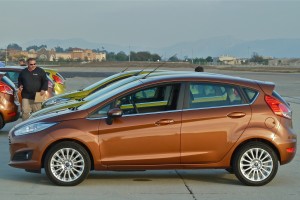
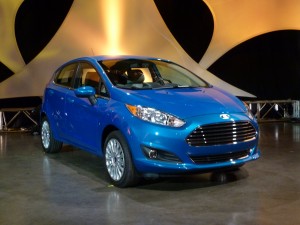
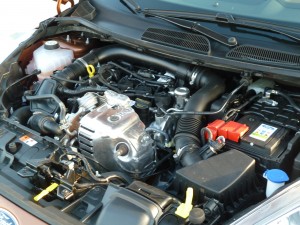
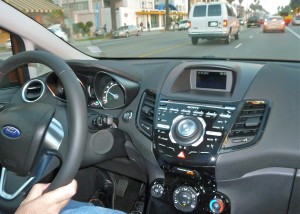
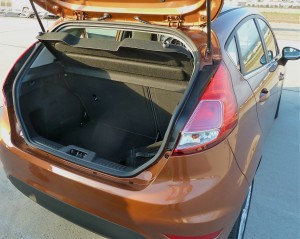
 John Gilbert is a lifetime Minnesotan and career journalist, specializing in cars and sports during and since spending 30 years at the Minneapolis Tribune, now the Star Tribune. More recently, he has continued translating the high-tech world of autos and sharing his passionate insights as a freelance writer/photographer/broadcaster. A member of the prestigious North American Car and Truck of the Year jury since 1993. John can be heard Monday-Friday from 9-11am on 610 KDAL(www.kdal610.com) on the "John Gilbert Show," and writes a column in the Duluth Reader.
John Gilbert is a lifetime Minnesotan and career journalist, specializing in cars and sports during and since spending 30 years at the Minneapolis Tribune, now the Star Tribune. More recently, he has continued translating the high-tech world of autos and sharing his passionate insights as a freelance writer/photographer/broadcaster. A member of the prestigious North American Car and Truck of the Year jury since 1993. John can be heard Monday-Friday from 9-11am on 610 KDAL(www.kdal610.com) on the "John Gilbert Show," and writes a column in the Duluth Reader.